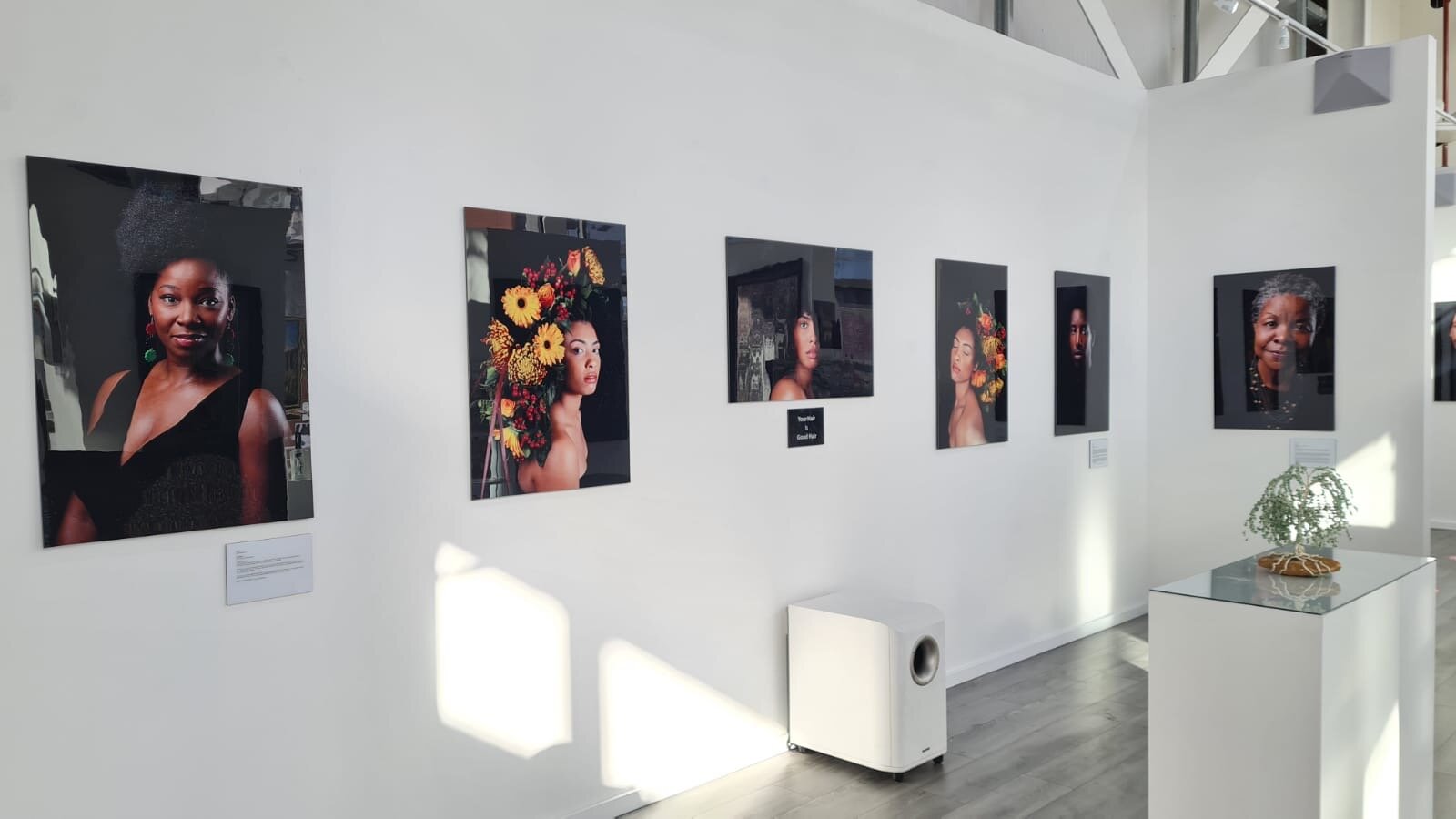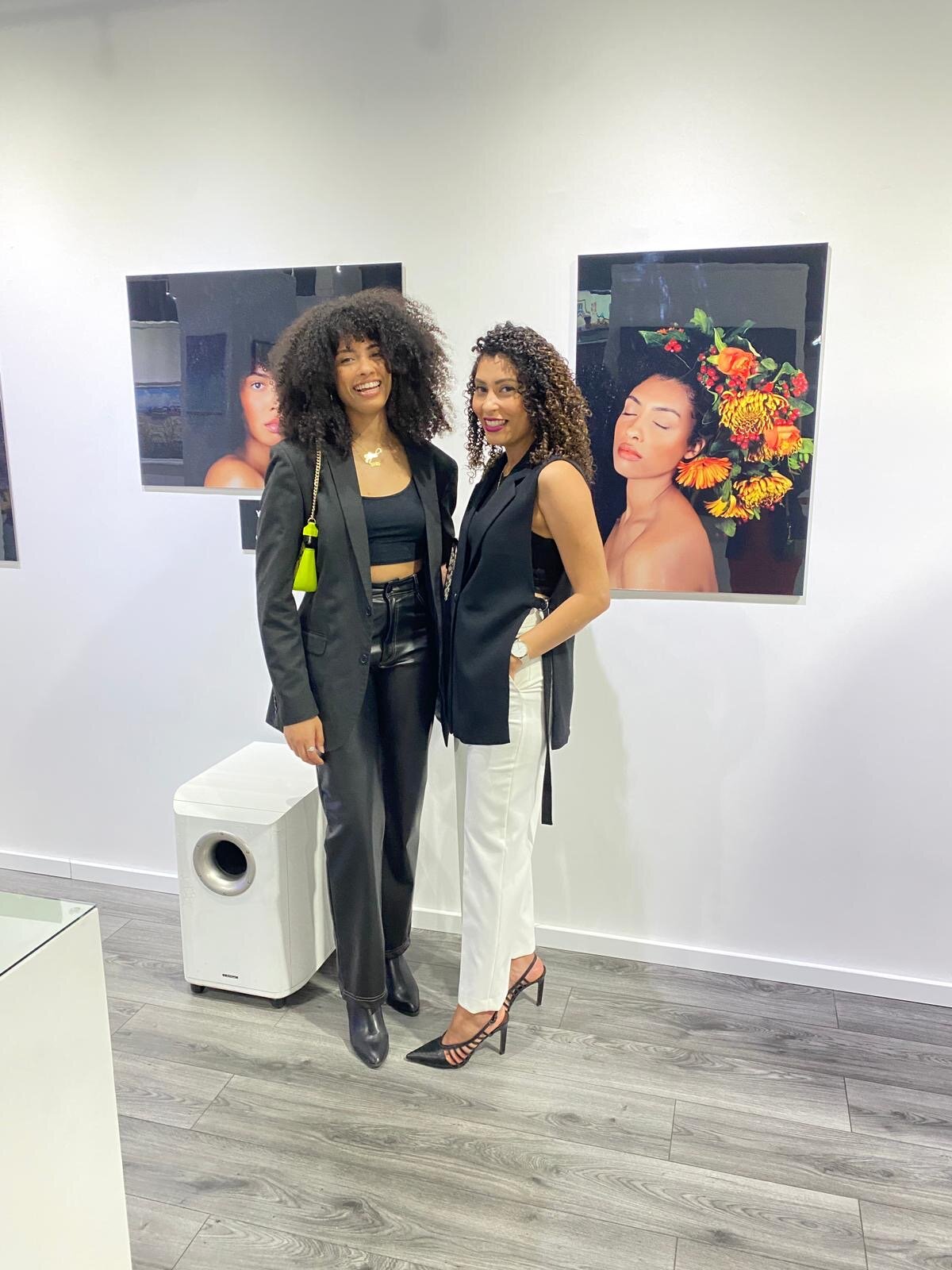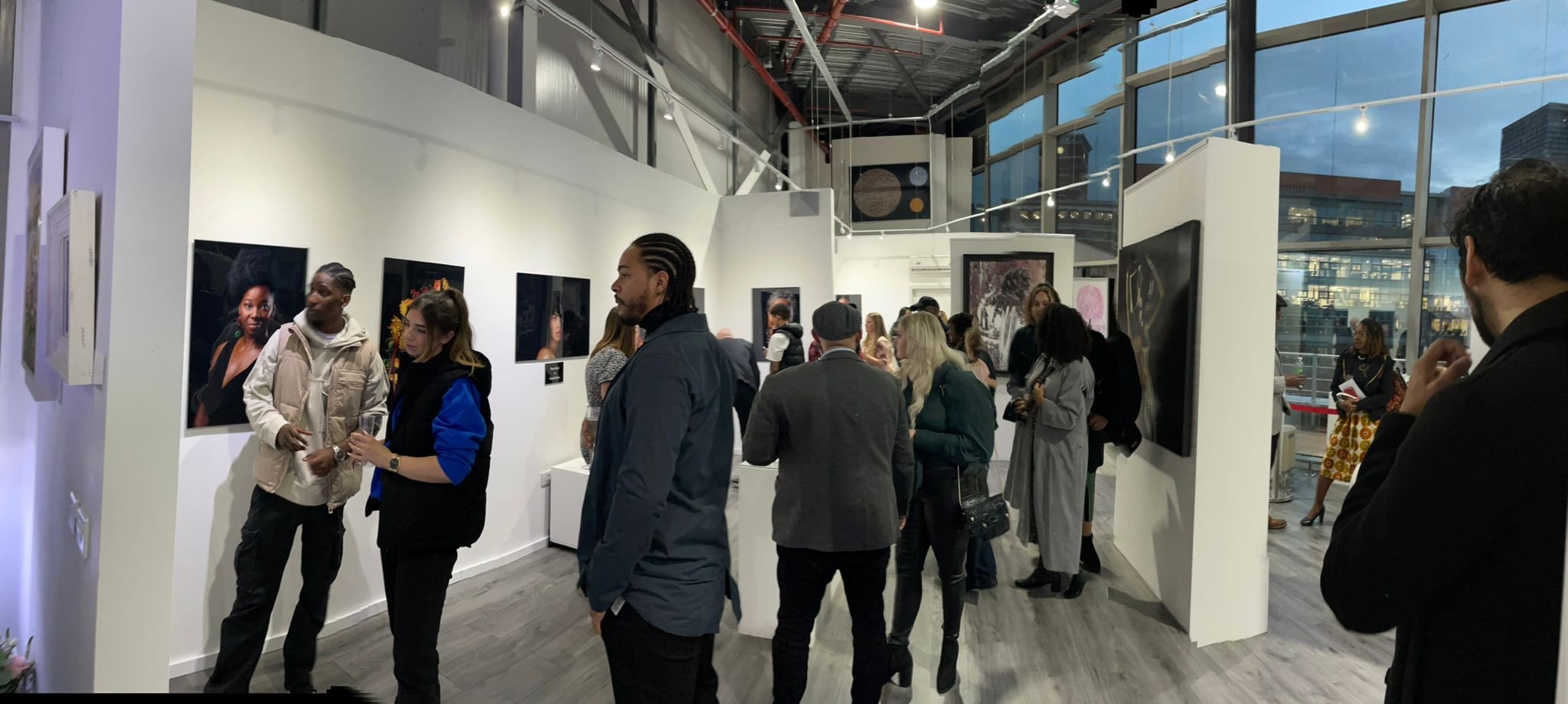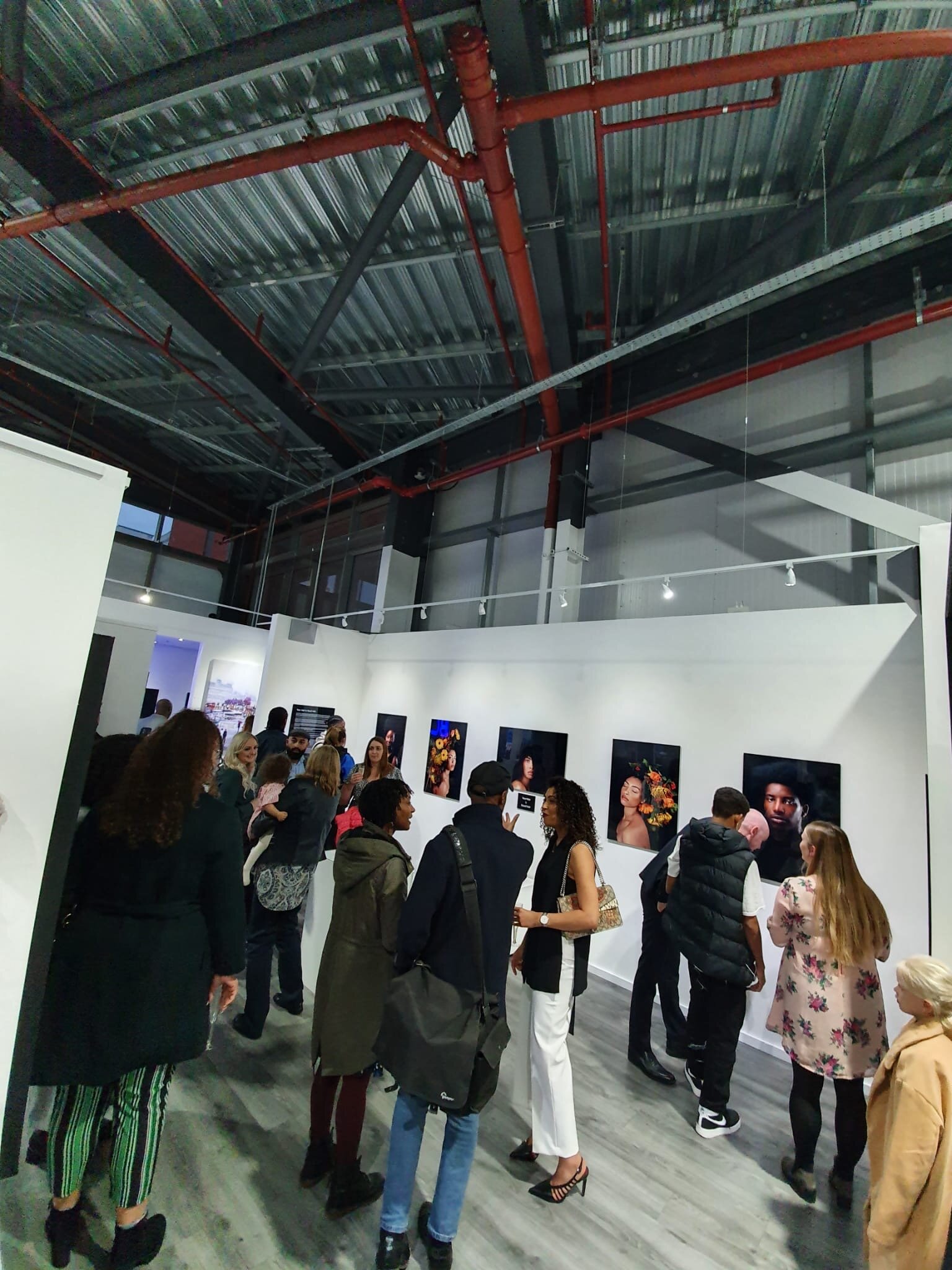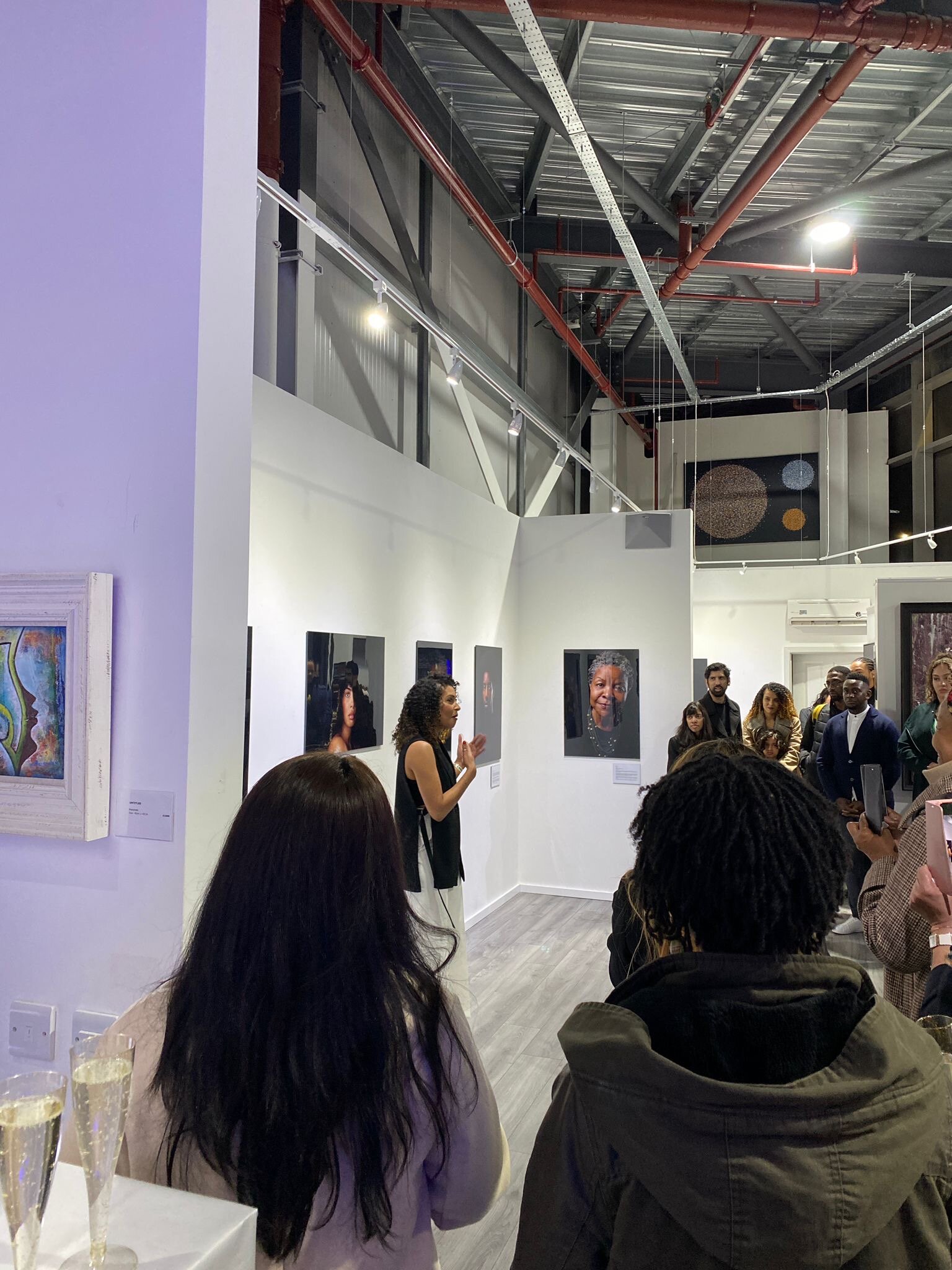Your Hair is Good Hair Exhibition
From a young age, Sumaya recalls her hair being a symbol of estrangement. She would straighten her hair often, damaging her natural curly texture, all in a bid to conform to conventional and media projected ideas of ”good hair”. It took losing her natural curl pattern, after undergoing a Brazilian hair straightening treatment, for her perspective to shift. Cutting her hair into a short bob, she began a journey of acceptance, while also interrogating why she, alongside many others, go through dire lengths to mould their diverse hair types into a single aesthetic.
Hair is undoubtedly interconnected to race. To fully understand this association, it is necessary to consider and acknowledge the history of hair.
During the slave trade, slave owners shaved the enslaved African’s hair to strip them of their identity. Enslaved Africans were prohibited from maintaining their hair in their traditional hairstyles and their hair was compared to that of animals. Slaves with longer, looser-curled hair and lighter skin would sell for a much higher price. They were favoured by their white masters and were likely to do house work where conditions were less harsh than the work in the fields. The Don’t Touch My Hair author, Emma Dabiri, states that “afro-textured hair had no stigma before the dehumanisation of black people that emerged from slavery”. The term ‘good hair’ was coined during the slave trade period.
In her book, Hair Story: Untangling the Roots of Black Hair in America, Lori L Tharps states that "the closer your hair was to white European hair, the more likely that it was that you had white blood in you. That meant that you would have more access to better food, better education, preferential treatment and be more likely to be set free - so literally good hair meant a better chance at life. It wasn't about beauty at all; it was about survival".
The relationship between ‘good hair and ‘white blood’ can be seen in the ‘pencil test’ used by the apartheid regime in South Africa to determine racial identity. A pencil was pushed through the hair of a person whose racial identity was uncertain. If the pencil fell to the floor then you ‘passed the test’ and if not, you had less rights than a white person.
The term ‘good hair’ is still relevant today and affects the way people of colour are perceived and treated depending on how they wear their hair. Given the above history, it's easy to see how the first black millionaire, Madame C J Walker made her wealth selling hair products.
In the 1700’s free people of colour wore beautiful elaborate hairstyles as a way of reclaiming their identity. Tignon Laws were then established in Louisiana which required women of colour to wear a tignon (a type of head covering) or a scarf to cover up their hair in public.
In the 1800’s, the Europeans saw an opportunity with the distinctiveness of the enslaved african’s hair, skin and physique and so they began showcasing them in human zoos and travelling shows.
Following the abolition of slavery, the term ‘good hair’ continued to be used to describe hair that is softer, curlier and eurocentric. The indoctrination of the standard of beauty which demands conformity to an aesthetic that values straight hair above all other hair types began to be publicly addressed. Marcus Garvey, a civil rights activist from Jamaica, advocated that we must remove the kinks from our minds, not our hair. Sadly, even in our current society, the term ‘good hair’ continues to be relevant. Sumaya is aware of many women in her community (including previously herself) who would straighten their hair before going to an interview. Not necessarily because they loathe their hair but because they do not believe that they would be offered the job if they brought their full natural self to the interview. Sumaya has been told at work to straighten her hair because she looks ‘smarter’ with straight hair. Sumaya got the impression that the person actually believed they were helping her which is why education and this exhibition is important.
Hair can be political. In the late 60’s, Angela Davies wore her hair in an afro whilst protesting and this became a symbol of black power.
Despite the natural hair movement in 2009, hair continues to be inseparable from race. Most recently, a number of school children of colour in the US and UK have been expelled because their curly/kinky hair was considered to be against school policy. What impact does being expelled because of your natural hair have on your confidence? Taking into account history, politics, the standard of beauty and recent events, you can see how the apparently silent rhetoric that only straight hair looks ‘professional’, is infact tangible and not silent at all. Ironically in the 1400’s, Alvise Cadamosto, a Venetian explorer who later became a slave trader, wrote of the hair of the people of West Africa that; “both sexes go bare-footed and uncovered, but weave their hair with neat tresses, which they tie in various knots.” This was of course before the transatlantic enslavement of Africans. Prior to enslavement and colonisation, Africans were proud of their hair and created elaborate and creative hairstyles, remnants of which can still be seen today.
This exhibition gives an insight into the experience of individuals with afrocentric hair/hairstyles having regard to the above history, politics, institutional and social indoctrination of the standard of beauty in films, fashion, magazines and society as a whole. The exhibition also aims to acknowledge and validate the experience of individuals with afrocentric hair/hairstyles. It integrates each portrait with a personal narrative from the participants, a gesture of agency in order to counter hair conformity and celebrate the beauty of diversity.
Objectives
To open up a dialogue in relation to afrocentric hair.
To provide an insight into the history of hair relative to race and social indoctrination of the standard of beauty.
To acknowledge and validate the experience of individuals with afrocentric hair/hairstyles.
The photographs and personal narratives are exhibited at the Birmingham Contemporary Art Gallery until 3 November 2021.
Sponsors
This exhibition was made possible by the generous sponsors, Denman Brushes and Dove. A huge thank you for your support and especially for getting behind this project in such short notice. The exhibition was created in two and a half months and it would not have been possible without the commitment of the participants, the sponsors and the gallery.
Should you wish to utilise the exhibition in any way, please do not hesitate to contact me here.
Your Hair is Good Hair
See the Virtual Exhibition Below (Full screen view is recommended; see instructions upon entering the exhibition)


